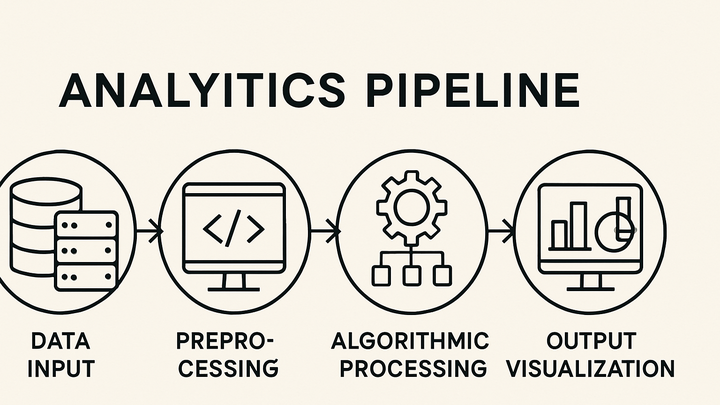Published on 2025-06-22T01:46:28Z
What is an Algorithm in Analytics? Examples for Algorithm
In analytics, an algorithm is a step-by-step procedure or formula for solving a problem or completing a task with data. It takes input data, applies a set of logical, mathematical, or statistical operations, and produces output such as metrics, predictions, or visualizations. Analytics algorithms underpin everything from basic data aggregation and reporting to advanced predictive models and real-time anomaly detection. They enable platforms like Google Analytics 4 (GA4) and PlainSignal to transform vast amounts of digital event data into actionable insights. By codifying best practices and statistical methods, algorithms ensure consistency, scalability, and accuracy in measuring user behavior and campaign performance. Modern analytics tools often incorporate machine learning algorithms for attribution modeling, clustering, and personalization. Understanding how algorithms work helps analysts fine-tune tracking configurations, choose the right metrics, and interpret results responsibly.
Algorithm
An algorithm in analytics is a systematic computational method to process data into insights in tools like GA4 and PlainSignal.
Definition and Role of Algorithms
This section defines what an algorithm is in the context of analytics and explains its fundamental purpose within data-driven decision-making processes.
-
What is an algorithm?
An algorithm is a finite set of well-defined instructions that takes raw data as input, processes it through logical or mathematical operations, and produces defined outputs.
-
Purpose in analytics
Algorithms automate data processing tasks such as aggregation, normalization, and prediction to reveal patterns, trends, and insights without manual intervention.
How Algorithms Work in Analytics Platforms
Explores the typical stages algorithms go through in analytics tools, from data ingestion to final reporting, and highlights technical considerations.
-
Data ingestion & preprocessing
Algorithms first collect event or transaction data and prepare it by cleaning, validating, and transforming it into a uniform format.
-
Normalization
Scaling or encoding data to a consistent range or format to ensure comparability.
-
Filtering
Removing duplicates, spam, or irrelevant records to improve data quality.
-
-
Computation & modeling
Core algorithmic logic applies statistical formulas or machine learning models to derive metrics, predictions, or classifications.
-
Statistical methods
Techniques like regression, clustering, and hypothesis testing used for analysis.
-
Machine learning
Supervised or unsupervised models that learn patterns from historical data.
-
-
Output & reporting
Processed results are formatted into dashboards, alerts, or reports, making insights accessible to stakeholders.
Examples in GA4 and PlainSignal
Real-world examples of analytics algorithms implemented in popular SaaS products to illustrate differences and use cases.
-
GA4 attribution algorithm
Google Analytics 4 uses a data-driven attribution algorithm that analyzes conversion paths to assign credit across multiple touchpoints.
-
PlainSignal cookie-free tracking
PlainSignal implements a simple, cookie-free algorithm that deduplicates events and constructs user sessions using JavaScript timestamps.
<link rel="preconnect" href="//eu.plainsignal.com/" crossorigin /> <script defer data-do="yourwebsitedomain.com" data-id="0GQV1xmtzQQ" data-api="//eu.plainsignal.com" src="//cdn.plainsignal.com/plainsignal-min.js"></script>
Best Practices and Considerations
Guidelines to optimize algorithm performance, maintain data integrity, and ensure compliance with privacy regulations.
-
Accuracy and bias
Regularly validate algorithm outputs against known benchmarks to detect and correct biases or errors.
-
Performance and scalability
Optimize computational efficiency and ensure algorithms can scale with growing data volumes.
-
Privacy and compliance
Design algorithms to respect user privacy, anonymize data where possible, and comply with regulations like GDPR.
